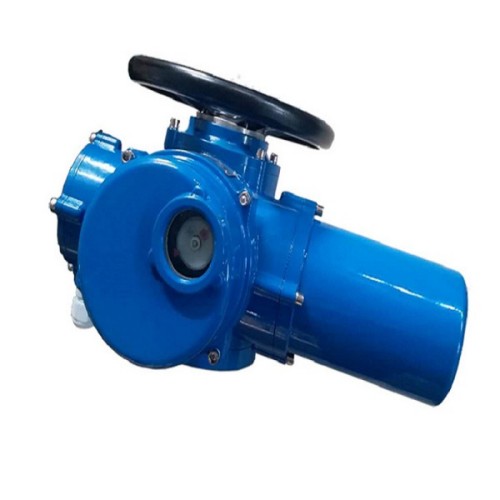Monitoring and Analyzing Exhaust Valve Temperature for Engine Performance Optimization
Understanding Exhaust Valve Temperature Significance and Management
Exhaust valve temperature (EVT) is a critical parameter in the operation of internal combustion engines, particularly in turbocharged and high-performance vehicles. It refers to the temperature of the exhaust valves while the engine is running, and monitoring this temperature is essential for ensuring the longevity and efficiency of the engine. As engines operate, the combustion process generates significant heat that must be effectively managed to avoid damaging engine components. This article aims to delve into the significance of exhaust valve temperature, its implications on engine performance, and strategies for effective management.
Importance of Monitoring Exhaust Valve Temperature
The exhaust valves in an engine play a vital role in expelling combustion gases from the combustion chamber to the exhaust system. Due to their positioning and function, these valves can experience extreme temperatures. When the gas is expelled, it can reach temperatures in excess of 900 degrees Celsius (approximately 1650 degrees Fahrenheit), depending on the engine's design and operating conditions. Understanding and monitoring EVT is critical because excessive temperatures can lead to valve deformity, material degradation, or even catastrophic engine failure.
One of the primary reasons for monitoring EVT is to prevent engine knock or pre-ignition. High temperatures can create scenarios where the fuel-air mixture ignites prematurely, leading to knocking, which may cause severe damage over time. Additionally, extreme temperatures can weaken the valve materials, leading to possible failure and the need for costly repairs. Therefore, maintaining optimal EVT is crucial for maximizing engine reliability and performance.
Factors Influencing Exhaust Valve Temperature
Several factors influence the exhaust valve temperature, including engine load, fuel composition, air-fuel ratio, and cooling system efficiency.
1. Engine Load Higher engine loads typically result in higher exhaust temperatures. In performance applications, aggressive driving or heavy towing can generate significantly elevated temperatures.
2. Fuel Composition The type of fuel used can dramatically affect combustion, which in turn influences EVT. Fuels with higher octane ratings or specific additives can improve combustion efficiency and lower exhaust temperatures.
3. Air-Fuel Ratio An ideal air-fuel ratio is necessary for optimal combustion. An overly rich or lean mixture can lead to higher temperatures, with lean mixtures resulting in excessively high temperatures due to incomplete combustion.
exhaust valve temperature

4. Cooling System Efficiency An effective cooling system is essential for maintaining optimal temperatures within the engine. If the cooling system is malfunctioning, it may not adequately manage the heat produced during engine operation, leading to an increase in exhaust valve temperature.
Strategies for Managing Exhaust Valve Temperature
To manage EVT effectively, several strategies can be employed
1. Regular Monitoring Utilizing advanced engine management systems with temperature sensors can provide real-time data on EVT. This allows for proactive adjustments to avoid overheating.
2. Cooling Enhancements Upgrading the engine cooling system, including the use of high-performance radiators and oil coolers, can help dissipate heat more effectively. Ensuring that coolant levels are adequate and that the cooling system functions optimally is essential.
3. Fuel Selection Opting for fuels with higher octane ratings can improve efficiency and lower EVT. Additionally, using fuels with additives specifically designed for better combustion can also help manage temperatures.
4. Tune the Engine Adjusting the engine's tuning to ensure an ideal air-fuel ratio can significantly affect EVT. This may involve reprogramming the engine control unit (ECU) or adjusting components of the fuel injection system.
5. Routine Maintenance Regular maintenance, including valve adjustments, exhaust system checks, and the inspection of cooling systems, is crucial for ensuring that the engine functions within its optimal temperature range.
Conclusion
Exhaust valve temperature is a paramount consideration in the health and performance of internal combustion engines. By understanding the factors that influence EVT and implementing effective management strategies, engine owners can enhance reliability, reduce the risk of failure, and optimize performance. As the automotive industry progresses towards more efficient designs, the proactive management of exhaust valve temperatures will continue to play a vital role in engine longevity and efficiency.
-
The Key to Fluid Control: Exploring the Advantages of Ball Valves in Industrial SystemsNewsJul.09,2025
-
The Versatile World of 1, 2, and 3 Piece Ball ValvesNewsJul.09,2025
-
Stainless Steel Ball Valves: The Ideal Choice for Efficient Flow ControlNewsJul.09,2025
-
Optimizing Fluid Control with Ball Float ValvesNewsJul.09,2025
-
Manual Gate Valves: Essential for Control and EfficiencyNewsJul.09,2025
-
Everything You Need to Know About Butterfly ValvesNewsJul.09,2025
-
The Versatility of Wafer Type Butterfly ValvesNewsJul.08,2025




